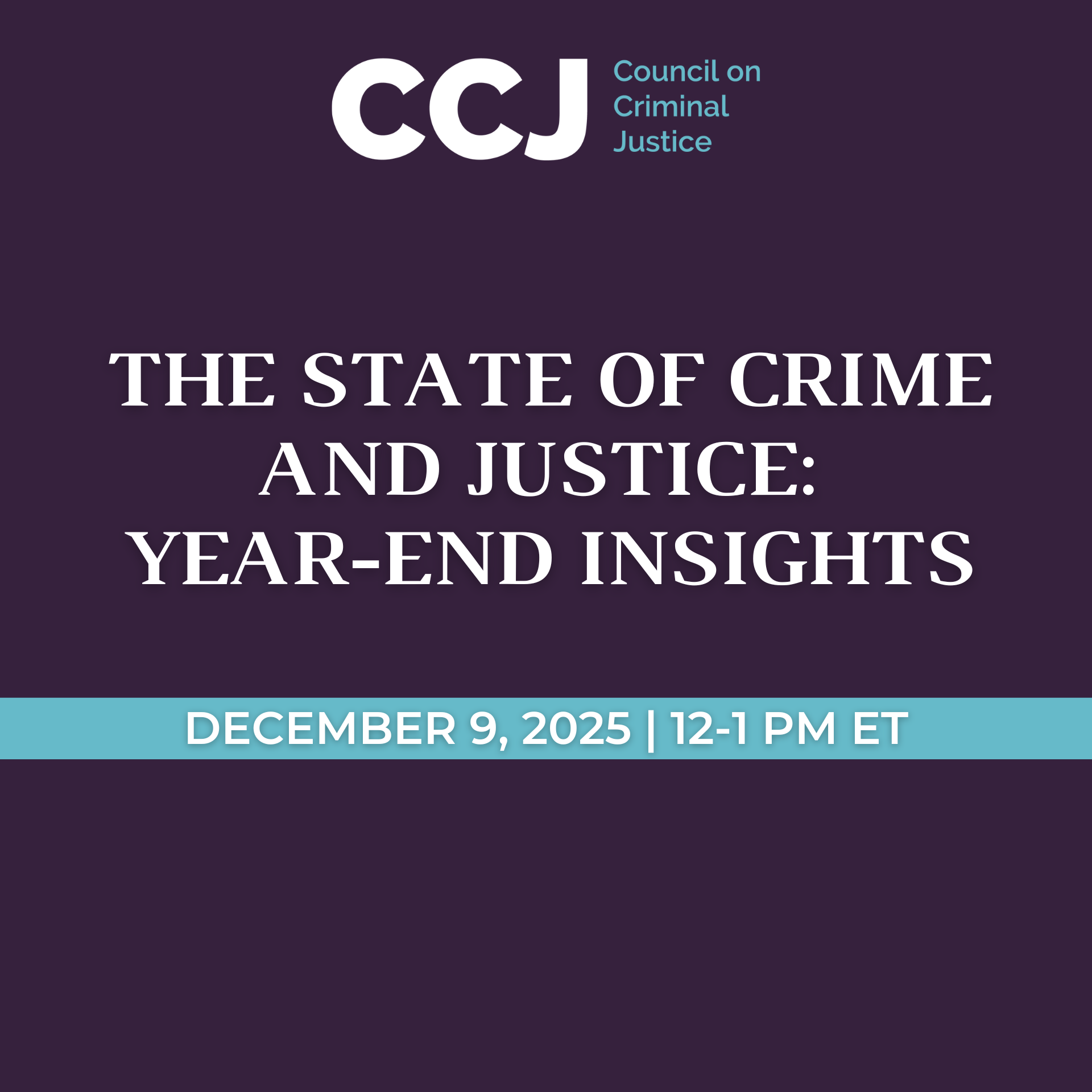New CCJ Analysis of 2023 Crime Trends Also Documents a Continuing Spike in Motor Vehicle Theft, With Offenses More Than Doubling in Seven Cities
FOR IMMEDIATE RELEASE
5:00 a.m. ET, July 20, 2023
Contact: Jenifer Warren
jwarren@counciloncj.org
916-217-0780
Washington, DC – Homicide and most other violent crimes declined in American cities in the first half of 2023, but they remain above levels seen before the onset of the coronavirus pandemic and nationwide protests that followed the killing of George Floyd, according to a new study of crime trends in 37 cities released today by the Council on Criminal Justice.
Examining homicides in 30 cities that make homicide data readily available, the analysis found that the number of murders in the first half of 2023 fell by 9.4% compared to the first half of 2022 (a decrease of 202 homicides in those cities). Twenty of the study cities recorded a decrease in homicides during the first six months of the year, ranging from a 59% drop in Raleigh, NC, to a 2% drop in Nashville, TN. Ten cities experienced an increase in homicide, ranging from about 5% in Seattle to 133% in Lincoln, NE.
Motor vehicle thefts, which began to rise at the onset of the pandemic, continued an upward trend. Considered a “keystone crime” that facilitates the commission of homicide and other offenses, motor vehicle theft rose by 33.5% in the first half of the year, representing 23,974 more stolen vehicles in the 32 cities that reported data. Seven of those cities experienced an increase of 100% or more, led by Rochester, NY, (+355%) and Cincinnati (+162%). Overall, the number of vehicle thefts from January to June 2023 was 104.3% higher than during the same period in 2019. While it’s likely that much of the increase is the result of thefts of Kia and Hyundai models, the authors said, rates were rising before the cars became popular targets.
In other findings, gun assaults (-5.6%), robberies (-3.6%), nonresidential burglaries (-5%), larcenies (-4.1%), residential burglaries (-3.8%), and aggravated assaults (-2.5%) all fell in the first six months of this year compared to the same timeframe last year. Drug offenses rose by 1% and domestic violence by 0.3%.
“The decline we see across the major crime categories is encouraging, but our country should not be comfortable with rates of violence that continue to claim thousands of lives each year,” said University of Missouri – St. Louis Professor Emeritus Richard Rosenfeld, co-author of the study and chair of CCJ’s recently formed Crime Trends Working Group. “We now have a solid array of research-backed crime prevention tools at our disposal. Law enforcement, policymakers, and communities should redouble efforts to deploy them.”
Expanding on the analysis of mid-year 2023 trends, the study provides comparisons with offense levels recorded in 2019, before the coronavirus, the killing of Floyd, and the ensuing mass protests over police violence. Violent crimes remained higher during the first half of 2023 compared to the first half of 2019. While homicide has receded from its peak in 2021, levels remained 24% higher than in the first half of 2019. Even if homicide rates were to fall back to pre-pandemic levels, the 2019 homicide rate was still 15% higher than in 2014, the lowest level recorded since World War II. Gun assaults (+39%), aggravated assaults (+8%), and robberies (+2%) also remained higher in the first half of 2023 compared to the first half of 2019.
Property crime trends were more mixed as motor vehicle thefts (+104.3%) and nonresidential burglaries (+5.1%) were higher in the first half of 2023 compared to the same period in 2019, while drug offenses (-38.7%), residential burglaries (-26%), and larcenies (-7%) were lower.
“The downward trends in violent crime we’re seeing as the pandemic recedes should not dim the intensity of our commitment to reduce violence across the country,” said CCJ Research Specialist Ernesto Lopez, the study’s co-author. “Although the levels of homicide and other violent crime are well below historical peaks, they remain intolerably high, especially in poorer communities of color.”
The authors noted that CCJ’s Task Force on Policing and Violent Crime Working Group highlight numerous reforms to improve policing and strengthen the overall effectiveness of violence reduction efforts in the U.S. In addition, the Crime Trends Working Group is currently investigating trends for multiple offenses and exploring ways to improve the nation’s crime data infrastructure.
Support for the group and the mid-year 2023 crime analysis comes from the Annie E. Casey Foundation, Arnold Ventures, the Harry Frank Guggenheim Foundation, Southern Company Foundation, and Stand Together Trust, as well as #StartSmall, the John D. and Catherine T. MacArthur Foundation and other CCJ general operating contributors.
About the Report and Data
Co-authored by Rosenfeld, Lopez, and Doctoral Candidate Bobby Boxerman, the new analysis updates a series of earlier reports with new data through June 2023. It examined crime rates for 10 violent, property, and drug offenses in 37 U.S. cities, including Atlanta, Detroit, Phoenix, Chicago, Denver, Memphis, San Francisco, Los Angeles, Washington, D.C., and Philadelphia. The smallest city in the sample was Chattanooga, TN, with 179,690 residents; the largest was New York, with more than 8.4 million residents. The 37 cities are not necessarily representative of all cities in the U.S., and not all cities reported data for each offense.
The data for this report were obtained within days of the end of the study period in order to provide a timely snapshot of crime across the nation. As a result, these figures may and likely will differ from data subsequently published by individual police departments. For the most up-to-date information for a specific city, please visit its website.
About the Council on Criminal Justice
The Council on Criminal Justice (CCJ) is a nonpartisan invitational membership organization and think tank that advances understanding of the criminal justice policy challenges facing the nation and builds consensus for solutions based on facts, evidence, and fundamental principles of justice.



